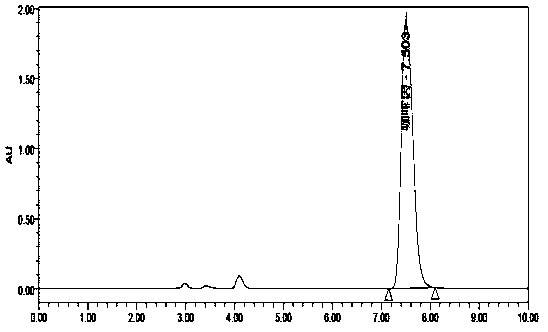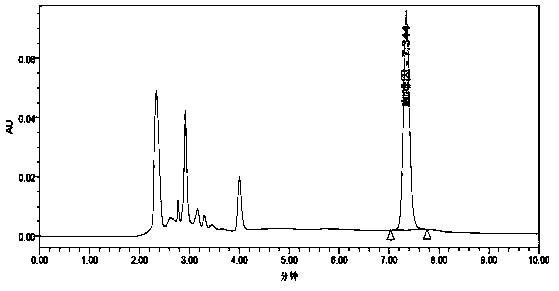Method for removing caffeine and pesticide residue in tea extract
A tea extract and tea extraction technology, applied in tea, food science, tea alkali content reduction, etc., can solve the problems of loss of effective components of tea polyphenols, failure to achieve good results, large amount of ethanol, etc., to avoid toxicity and harm Effects of solvent residue, improvement of health quality, and saving of ethanol consumption
- Summary
- Abstract
- Description
- Claims
- Application Information
AI Technical Summary
Problems solved by technology
Method used
Image
Examples
Embodiment 1
[0055] Take 1 kg of Pu'er tea extract (purchased on the market or prepared according to the method of water extraction in the prior art) a, add 6 liters of 95% ethanol for reflux extraction, and filter; continue to add 6 liters of 95% ethanol for reflux extraction, filter; Add 6 liters of 95% ethanol to reflux extraction, filter;
[0056] After the filter residue is dried, the tea extract b is obtained for subsequent use;
[0057] The extract obtained from the three extractions is concentrated and crystallized, filtered, and the filter residue is dried to obtain crude caffeine; the filtrate is concentrated and added to tea extract b, and the ethanol is evaporated to obtain a low-caffeine, low-pesticide Pu-erh tea extract.
Embodiment 2
[0059] Take 1 kg of Pu'er tea extract (purchased on the market or prepared according to the method of water extraction in the prior art) a, add 6 liters of 80% ethanol for reflux extraction, filter; continue to add 6 liters of 80% ethanol for reflux extraction, and filter the filter residue; Add 6 liters of 80% ethanol for reflux extraction, filter, wherein the ethanol is used for each extraction;
[0060] After the filter residue is dried, the tea extract b is obtained for subsequent use;
[0061] The extract obtained from the three extractions is concentrated and crystallized, filtered, and the filter residue is dried to obtain crude caffeine; the filtrate is concentrated and added to tea extract b, and the ethanol is evaporated to obtain a low-caffeine, low-pesticide Pu-erh tea extract.
Embodiment 3
[0063] Take 1 kg of Pu'er tea extract (purchased on the market or prepared according to the method of water extraction in the prior art) a, add 6 liters of absolute ethanol for reflux extraction, and filter; continue to add 6 liters of anhydrous ethanol for reflux extraction, filter; Add 6 liters of absolute ethanol for reflux extraction, filter, wherein the ethanol is recycled;
[0064] After the filter residue is dried, the tea extract b is obtained for subsequent use;
[0065] The extract obtained from the three extractions is concentrated and crystallized, filtered, and the filter residue is dried to obtain crude caffeine; the filtrate is concentrated and added to tea extract b, and the ethanol is evaporated to obtain a low-caffeine, low-pesticide Pu-erh tea extract.
PUM
 Login to View More
Login to View More Abstract
Description
Claims
Application Information
 Login to View More
Login to View More - R&D
- Intellectual Property
- Life Sciences
- Materials
- Tech Scout
- Unparalleled Data Quality
- Higher Quality Content
- 60% Fewer Hallucinations
Browse by: Latest US Patents, China's latest patents, Technical Efficacy Thesaurus, Application Domain, Technology Topic, Popular Technical Reports.
© 2025 PatSnap. All rights reserved.Legal|Privacy policy|Modern Slavery Act Transparency Statement|Sitemap|About US| Contact US: help@patsnap.com



